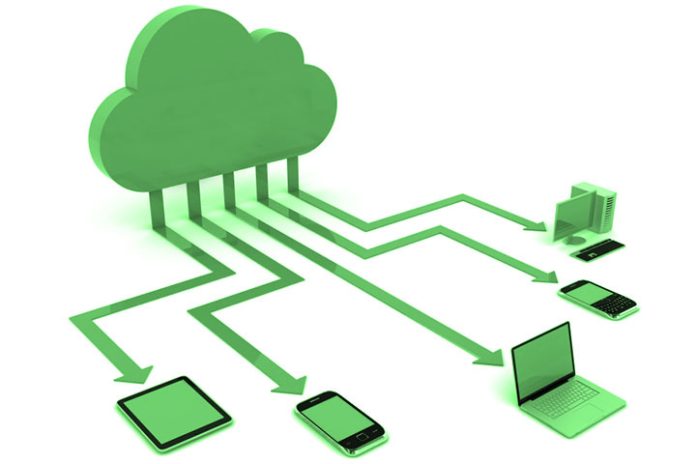Most organizations are deciding to move to the cloud. The tech media organization Foundry (previously IDG) conducts a yearly review called the Distributed Computing Study, which estimates patterns in distributed computing. Almost 70% of organizations have sped up their movement to the cloud somewhat recently, and the level of organizations with their IT framework in the cloud is projected to hop from 41% to 63% in a little more than a year. Why are organizations relocating to the cloud instead of having their information on-premise? Here are the primary benefits of distributed computing administrations.
Scalability And Elasticity
One of the principal weaknesses of organizations with on-premise servers was the need generally to have sufficient limits accessible to deal with top asset requests, which implied squandering superfluous assets during times of declining requests. On the other hand, the cloud permits you to rapidly scale assets to meet startling traffic and utilization spikes (adaptability) and diminish assets when traffic diminishes (flexibility).
It’s likewise more available and more affordable than scaling an on-premises framework, and execution times are a lot more limited. The best part is the straightforwardness of applying scaling in the cloud. Similarly, with only a couple of snaps, we can increment or lessen the accessible assets as per our requirements. Many cloud administrations have an auto scaling capability, by which assets are consequently increased or down in light of the responsibility upheld at some random time.
Also Read: The Trend For 2023: The Scaling Of The Cloud
High Availability And Multiple Points Of Presence
Both the concepts of availability and presence focus on improving the user experience, avoiding system crashes or increased latency. If we had our servers in-house, they would, in all likelihood, be in one spot together, so if a client attempted to associate from the opposite side of the world, they would encounter a critical deferral. To avoid this issue, distributed computing administrations have a few places of presence with servers worldwide, gathered into locales.
Along these lines, we can duplicate our administration in every district (overt repetitiveness) so any client can get to it with extremely low idleness, paying little mind to the area. Thus, this overt repetitiveness shields our framework from disappointment, holding our administration back from being intruded. For instance, assume a severe disappointment happens in one of these districts (power outage, fire, flood, etc.). We can rapidly divert traffic to other servers our administration facilitates until we can re-establish the bombed server. Along these lines, we will accomplish, for all intents and purposes, 100 percent administration accessibility.
Remote Access
Since the data isn’t in an actual area, it tends to be gotten to any place. Cloud arrangements are open whenever, from any gadget, through a direct Web association. This is a benefit of further developing worker accessibility and portability. It likewise permits you to develop further joint efforts with partners or contacts outside the organization, working in a planned way from various workstations. This converts into more noteworthy working adaptability and a critical efficiency improvement.
Safety
For companies moving to the cloud, the security offered is a must. Typically, companies that provide cloud computing services have better security systems than we could implement on our on-premise servers and at lower costs. Some of the security measures they usually offer are:
- Identity and Access Management (IAM): The core functionality of IAM is to create digital identities for all users with permissions needed only for the tasks they need to perform, so they can control who does what with a given resource.
- Firewalls and advanced security filters prevent the constant attack attempts that exist today and evolve rapidly.
- Data Encryption: Cloud services keep our data safe by encrypting it at rest and in transit, thus minimizing the risk of data theft.
- Regular and automatic backups to avoid data loss in case of failure.
- Stringent Physical Security Measures: The data centers of different cloud computing vendors have many security measures to prevent their hosted servers from being compromised. Some of these measures are:
- A safe place, away from areas with a high risk of natural disasters and other threats.
- Access control to facilities to allow entry only to authorized personnel.
Cost Savings
Investing in cloud computing brings enormous savings, as businesses pay only for the services they have contracted for, without having to shell out enormous sums to purchase and maintain equipment. Here are some of the benefits:
- It does not require a significant initial investment in infrastructure, as cloud services manage them, thus reducing the economic risk taken.
- We prevent our equipment from becoming obsolete, as the supplier is responsible for always keeping it up-to-date, using the latest technology, and increasing our competitiveness against other companies.
- Expense forecasting: Cloud computing services have tools to manage our expenses so that we have complete control over how much we will spend each month.
Sustainability
Natural worries and a supportable model have become the fundamental drivers of development in organizations, and one of the principal targets of distributed computing organizations is to limit their carbon impression. Organizations that relocate their administrations to the cloud can lessen their carbon impression by up to 84%.
One of the most prominent organizations that propose distributed computing administrations, Google, has pronounced that by 2030 it self disciplines every one of its server farms with 100 percent sans co2 energy, day in and day out. Having broken down a portion of the real benefits of distributed computing administrations over organizations that have their servers on-premise, nothing unexpected most organizations are changing to this model, as it is progressively clear that any organization that needs to be cutthroat in its area ought to decide on the cloud.
Also Read: What Is Multi-Cloud, And How Does It Work?

